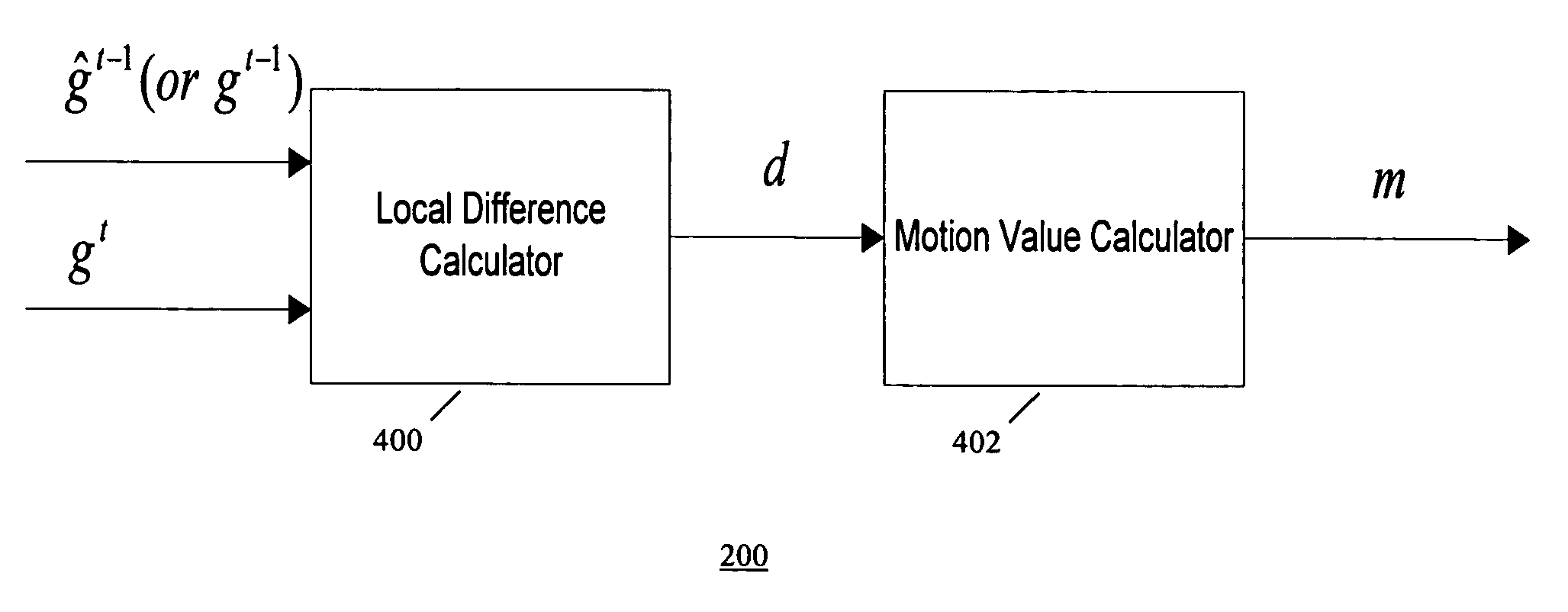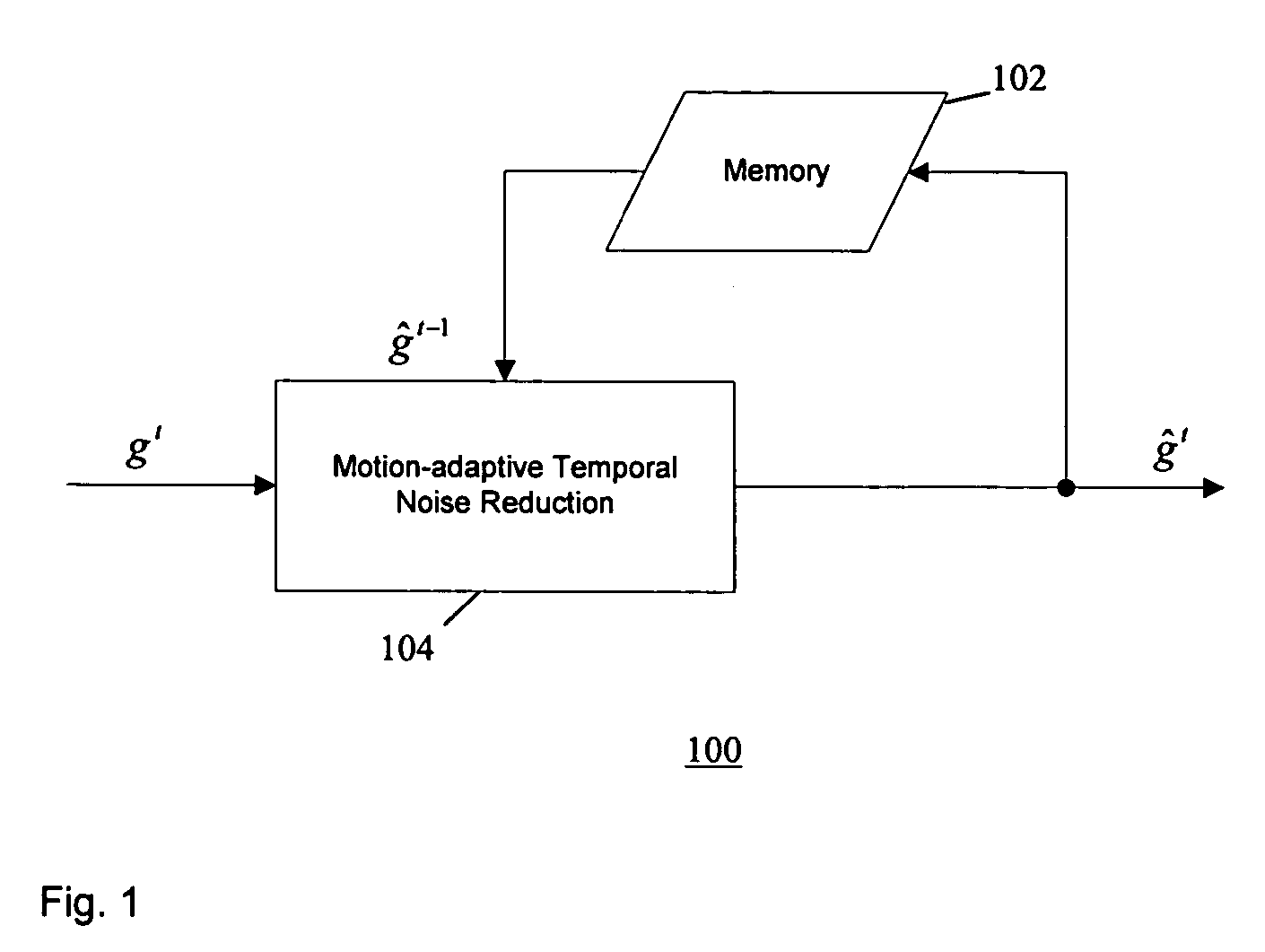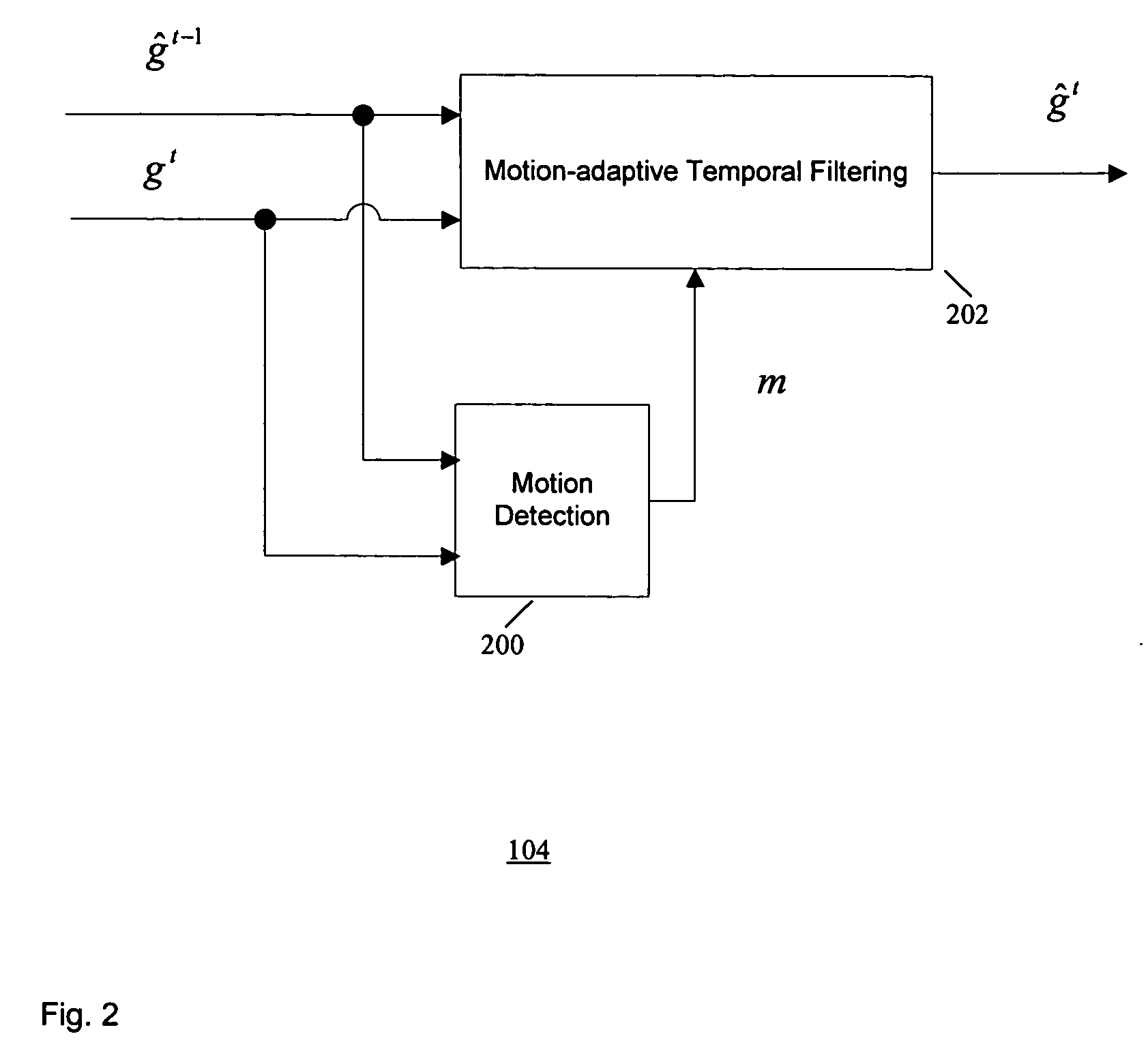Method of temporal noise reduction in video sequences
a video sequence and temporal noise technology, applied in the field of video processing, can solve the problems of severe blurring of images, few real products used, and the computational cost of sorting becomes too expensive for practical implementation, and achieves the effects of less memory, less noise, and less nois
- Summary
- Abstract
- Description
- Claims
- Application Information
AI Technical Summary
Benefits of technology
Problems solved by technology
Method used
Image
Examples
Embodiment Construction
[0020] According to one embodiment of the present invention, temporal noise reduction is applied to two video frames, wherein one video frame is the current input noisy frame, and the other video frame is a previous filtered frame stored in memory. Once the current frame is filtered, it is saved into memory for filtering the next incoming frame. A motion-adaptive temporal filtering method is applied for noise reduction. Pixel-wise motion information between the current frame and the previous (filtered) frame in memory is examined. Then the pixels in the current frame are classified into motion region and non-motion region relative to the previous (filtered) frame. In a non-motion region, pixels in the current frame are filtered along the temporal axis based on the Maximum Likelihood Estimation method (the filtering output is essentially optimal). In a motion region, the temporal filter is switched off to avoid motion blurring.
[0021] Referring to the drawings, preferred embodiments ...
PUM
 Login to View More
Login to View More Abstract
Description
Claims
Application Information
 Login to View More
Login to View More - R&D
- Intellectual Property
- Life Sciences
- Materials
- Tech Scout
- Unparalleled Data Quality
- Higher Quality Content
- 60% Fewer Hallucinations
Browse by: Latest US Patents, China's latest patents, Technical Efficacy Thesaurus, Application Domain, Technology Topic, Popular Technical Reports.
© 2025 PatSnap. All rights reserved.Legal|Privacy policy|Modern Slavery Act Transparency Statement|Sitemap|About US| Contact US: help@patsnap.com



